Cross Flow Heat Exchanger Equations
The thermodynamic free energy is the amount of work that a thermodynamic system can perform. The thickness is 1 in.
Effectiveness-NTU curves for different values of Cr Reference.
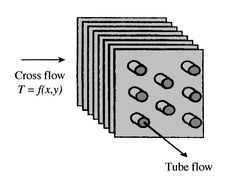
. The F-LMTD method is widely used in heat exchanger analysis particularly for heat exchanger selection sizing problems when as a result of the process requirements the temperatures are known and the size of the heat exchanger is. It is a measure of the heat exchangers departure from the ideal behavior of a counter flow heat exchanger having the same terminal temperatures. Do not change in time.
Heat exchangers have widespread industrial and domestic applications. 𝑐𝑐 ln Parallel-Flow Heat Exchanger 𝑙𝑙𝑚𝑚𝐶𝐶𝑃𝑃 𝑑𝑑. Heat Exchangers Transfer of heat is usually accomplished by means of a device known as a heat exchanger.
The 50 ethylene glycol at a rate of 047 kgs enters at 90C. Accounting for vast changes in temperature like cold flows simulating heat exchanger profiles and optimizing their performance as well as examining the micro and nano-scale materials flowing through any system can all be on the plate of a thermal aerospace engineer. The primary and secondary fluid in an heat exchanger process may.
A Counter current flow b One shell-pass two tube-pass c Two shell-passes four tube-passes. The mean temperature difference in a heat transfer process depends on the direction of fluid flows involved in the process. The heat exchange duty a llows calculation of the log mean.
Flow in the same direction - parallel flow or co-current flow. Q is the rate of heat exchange eg in kJh Ni is the flowrate of stream i eg in kmolh Hi is the specific enthalpy of stream i kJkmol U is the overall heat transfer coefficient kJm2K A is the heat exchange area m2 F is the correction factor for the deviation from cocurrent or countercurrent flow dTavg is the average temperature difference between. Ln Counter-Flow Heat Exchanger For Cross-Flow and Shell-and-Tube Heat Exchangers.
Plot the Pr number for CO 2 at 40 C and H 2 O at 400 C at pressures from 001 to 60 MPa. Example 52 Miniature Shell-and-Tube Heat Exchanger A miniature shell-and-tube heat exchanger is designed to cool engine oil in an engine with the engine coolant 50 ethylene glycol. Many types of heat.
1000 Btuhr is conducted through a section of insulating material shown in Figure 1 that measures 1 ft 2 in cross-sectional area. A heat exchanger is a system used to transfer heat between a source and a working fluidHeat exchangers are used in both cooling and heating processes. In the opposite direction - counter-current flow.
In addition working through aerodynamic efficiency controlling acoustics and engaging in the next. Heat transfer is the energy exchanged between materials solidliquidgas as a result of a temperature difference. Non-Regenerative Heat Exchanger The non-regenerative application is the most frequent and involves two separate fluids.
A steady fluid flow infers a flow of which parameters such as mass flow rate pressure temperature etc. Enthalpy is a thermodynamic potential designated by the letter H that is the sum of the internal energy of the system U plus the product of pressure. Or perpendicular to each other - cross flow.
Example 85 Prandtl number for CO 2 and H 2 O in the supercritical critical region. At a given T and P the thermodynamic state of the fluid is fixedUse the Excel functions. The fluids may be separated by a solid wall to prevent mixing or they may be in direct contact.
Is the total heat exchanger surface area. SolutionThe Pr number Pr C p μk is calculated from Eq. In the following figure you can see the curves to find the effectiveness of a cross flow heat exchanger for different values of NTU and C r.
If the curves cross this means that heat transfer will switch direction which is physically impossible the best that can happen is for both streams to reach the same temperature. In the parallel-flow arrangement of Figure 188a the hot and cold fluids enter at the same end flow in the same direction and leave at the same end. The simplest heat exchanger is one for which the hot and cold fluids move in the same or opposite directions in a concentric tube or double-pipe construction.
The mass and energy balance equations of the heat exchanger for air heating are given as. 817 and only depends on the properties of the fluid. The use of Equations 2-4 and 2-5 in determining the amount of heat transferred by conduction is demonstrated in the following examples.
Parallel and Counter-Flow Designs Parallel and Counter Flow heat exchanger Designs. Given that mass flow rate heat transfer rates and work transfer rates are constant the. Flows of mass and energy that cross the system boundary are steady.
A heat exchanger is a heat transfer device that exchanges heat between two or more process fluids. They are widely used in space heating refrigeration air conditioning power stations chemical plants petrochemical plants. And the thermal conductivity is 012 Btuhr-ft-F.
The double pipe heat exchanger is one heat exchanger pipe inside another larger pipe for either counter flow or parallel flow pattern. In the counterflow arrangement of Figure 188b the. The engine oil at a flow rate of 023 kgs enters the exchanger at 120C and leaves at 115C.
Different heat exchangers flow patterns.

Understanding Heat Exchangers Types Designs Applications And Selection Guide

Chapter 3 2 Heat Exchanger Analysis Using Ntu Method Ppt Video Online Download
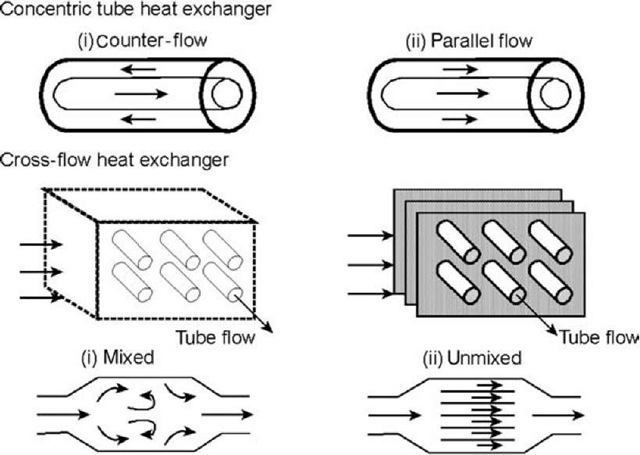
Cross Flow Heat Exchangers All Practical Guides You Should Know
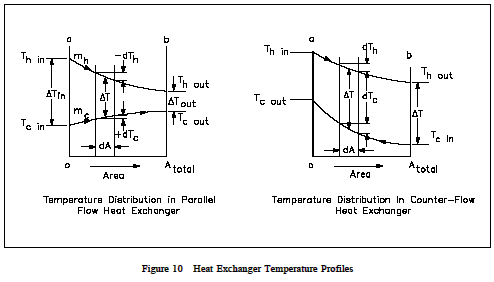
Parallel And Counter Flow Designs Heat Exchangers
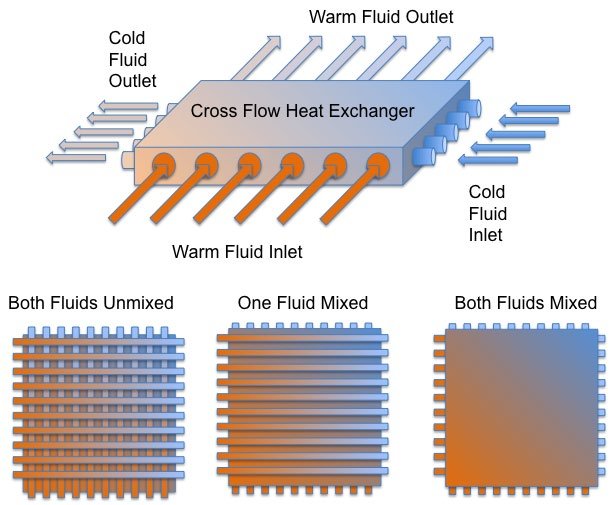
Cross Flow Heat Exchangers All Practical Guides You Should Know
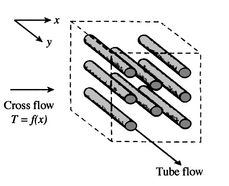
0 Response to "Cross Flow Heat Exchanger Equations"
Post a Comment